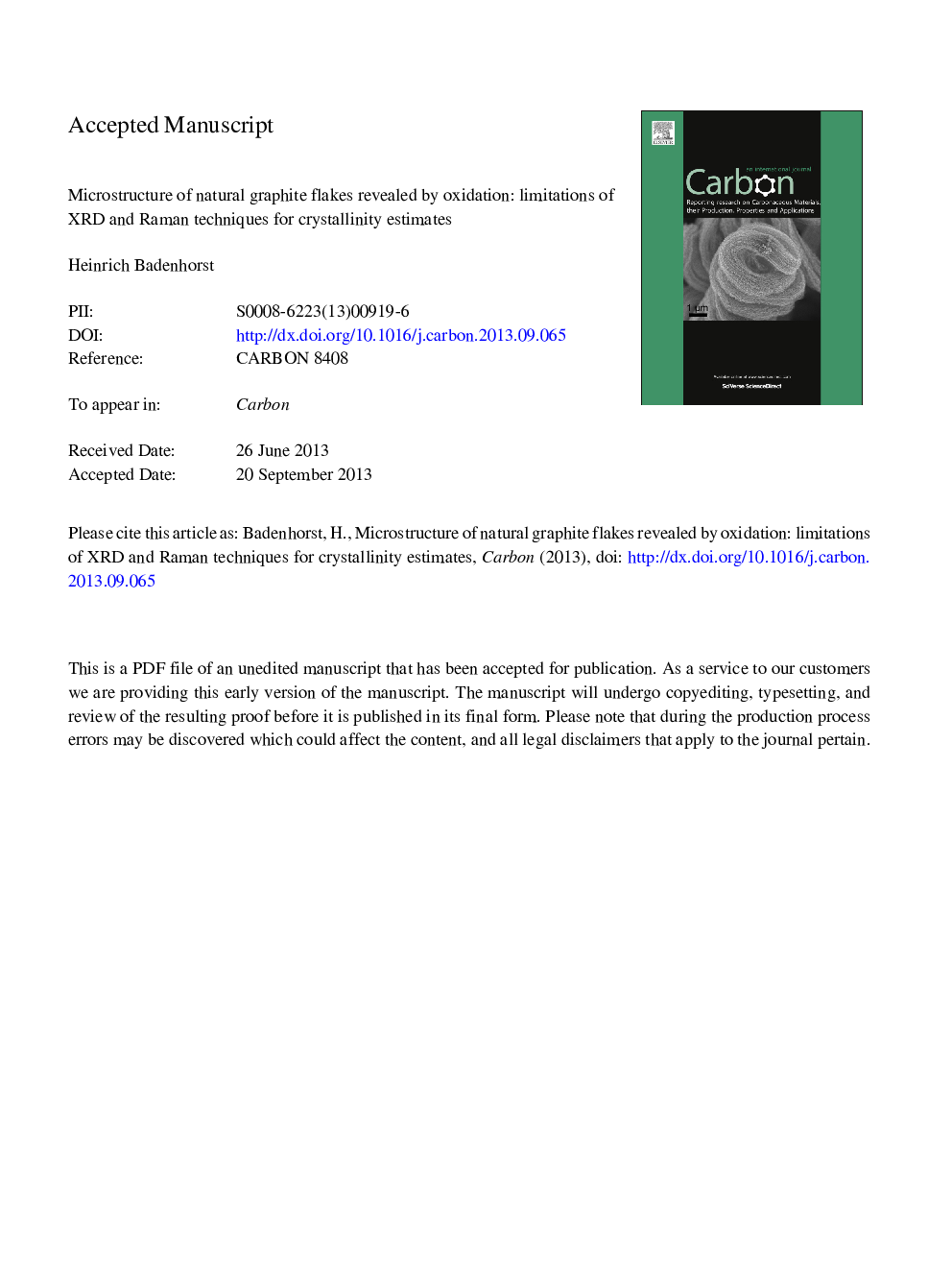| کد مقاله | کد نشریه | سال انتشار | مقاله انگلیسی | نسخه تمام متن |
|---|---|---|---|---|
| 7855884 | 1508881 | 2014 | 50 صفحه PDF | دانلود رایگان |
عنوان انگلیسی مقاله ISI
Microstructure of natural graphite flakes revealed by oxidation: Limitations of XRD and Raman techniques for crystallinity estimates
دانلود مقاله + سفارش ترجمه
دانلود مقاله ISI انگلیسی
رایگان برای ایرانیان
موضوعات مرتبط
مهندسی و علوم پایه
مهندسی انرژی
انرژی (عمومی)
پیش نمایش صفحه اول مقاله

چکیده انگلیسی
The estimation of the active surface area (ASA) of various macrocrystalline graphitic materials is industrially valuable but the microstructures of these materials are still contestable. This in turn has led to difficulties in the unambiguous interpretation of crystallographic measurements with powder X-ray diffraction (pXRD) and Raman spectroscopy as well as their relationship to the ASA. To resolve this issue a systematic approach is required. As a starting point two widely accepted pXRD and Raman methodologies were utilized. Purified, oxidized, natural graphite flakes were extensively examined to elucidate the essential microstructural features. Based on this an illustrative model was formulated as grounds for interpreting the measured crystallite domain sizes. Only one of the crystallographic parameters could be linked to the observed microstructure. For macrocrystalline graphite both techniques are subject to instrumental limitations and should not be used. Due to the non-linearity of the correlations they are prone to measurement uncertainty and should not be used above acceptable limits. In addition, the current inability to distinguish between different defect types leads to ambiguous results. Despite being a single, interrelated crystal the composite nature of the flakes will make it difficult to relate even an ideal, accurate domain size measurement to the ASA.
ناشر
Database: Elsevier - ScienceDirect (ساینس دایرکت)
Journal: Carbon - Volume 66, January 2014, Pages 674-690
Journal: Carbon - Volume 66, January 2014, Pages 674-690
نویسندگان
Heinrich Badenhorst,